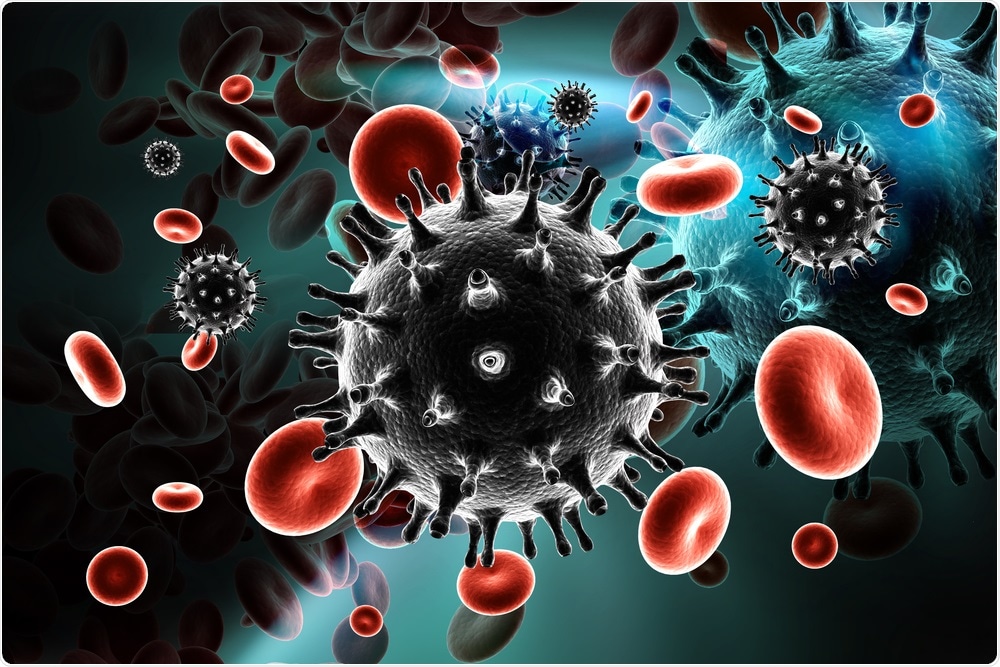According to a study published recently in the eLife journal, researchers have established the optimal conditions after a stem cell transplant that could regulate HIV without having to use a daily pill.

HIV. Image Credit: RAJ CREATIONZS/Shutterstock.com
Identifying the right balance of cell type, stem cell dose, and timing of antiretroviral therapy (ART) may possibly result in a spontaneous cure of HIV.
Only two cases of HIV cure are available to date: the London Patient and the Berlin Patient, in whom stem cells were transplanted with stem cells taken from donors who lack a molecule known as CCR5, to which HIV is attracted.
The major obstacle to HIV eradication is a latent reservoir of long-lived infected cells, and cure strategies aim to eliminate all infected cells or permanently prevent viral reactivation from latency. We wanted to recreate the cures seen in the Berlin and London patients but with reduced toxicity.”
E. Fabian Cardozo-Ojeda, Study First Author and Senior Staff Scientist, Vaccine and Infectious Disease Division, Fred Hutchinson Cancer Research Center
The researchers studied the use of autologous stem cell transplants, in which bone marrow stem cells are extracted from the patient, then designed using gene editing so that they lack the CCR5 molecule, and finally transplanted in patients.
At present, this method is being tested in an early clinical trial in HIV patients; however, the least number of CCR5-edited stem cells needed for the long-term cure or remission observed in the London and Berlin patients was not known.
Hence, to establish this, the team designed a multi-stage mathematical model to examine the dynamics of transplanted and residual stem cells, HIV viral loads (that is, the quantity of virus in the blood), and how these are impacted by the timing of ART withdrawal.
The model was based on information obtained from 22 monkeys that had simian HIV and were treated with a stem cell transplant, either with or without CCR5 gene editing. Subsequently, ART was stopped in a subset of the animals after a year.
The viral load and the dynamics of immune cells varied between the animals; however, a stable theme was that the viral load following ART withdrawal was greater in transplanted animals when compared to the untreated ones. This indicates that stem cell transplantation may decrease the prevailing immune cell immunity to HIV.
The researchers speculated that if the CCR5 molecule is adequately disrupted in the transplanted stem cells, the immunity could be recovered.
To examine this further, they applied their model to estimate the conditions needed to obtain viral control following ART withdrawal. They observed two significant conditions—the first condition was ensuring a dose of at least five times as many transplanted stem cells as there are residual stem cells post the transplant, and the second condition was enabling the CCR5-edited stem cells to be at least 76%–94% of the total population of transplanted stem cells.
Our model predicts that viral control might be possible following autologous, gene-edited stem cell transplants if a sufficient proportion of edited stem cells are allowed to repopulate the blood before ART is stopped. The results illustrate the capabilities of mathematical models in optimising strategies for HIV cure.”
Joshua T. Schiffer, Study Senior Author and Associate Professor, Vaccine and Infectious Disease Division, Fred Hutchinson Cancer Center
Source:
Journal reference:
Cardozo-Ojeda, E. F., et al. (2021) Thresholds for post-rebound SHIV control after CCR5 gene-edited autologous hematopoietic cell transplantation. eLife. doi.org/10.7554/eLife.57646.